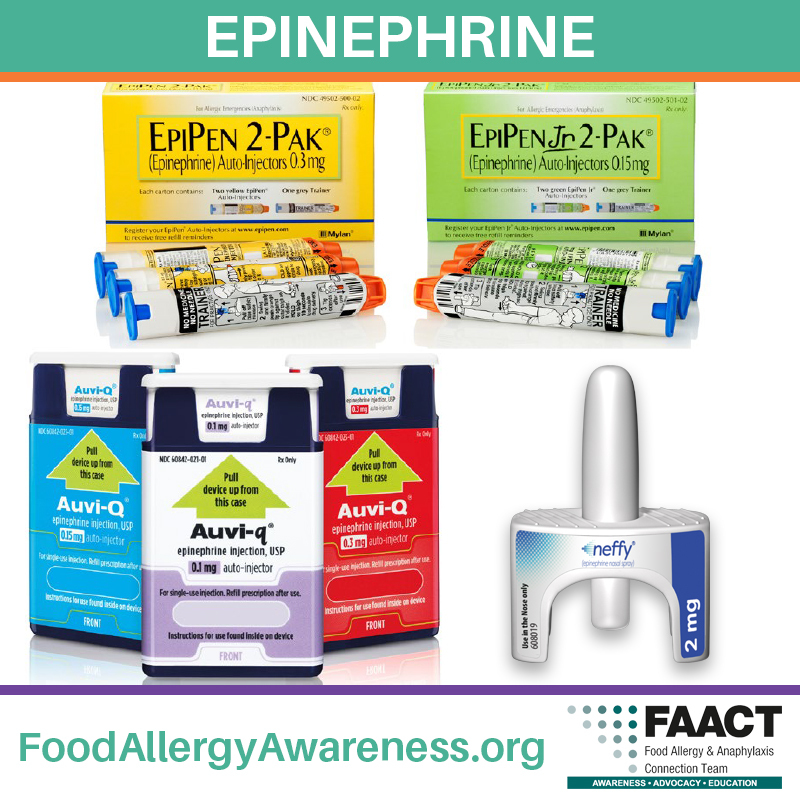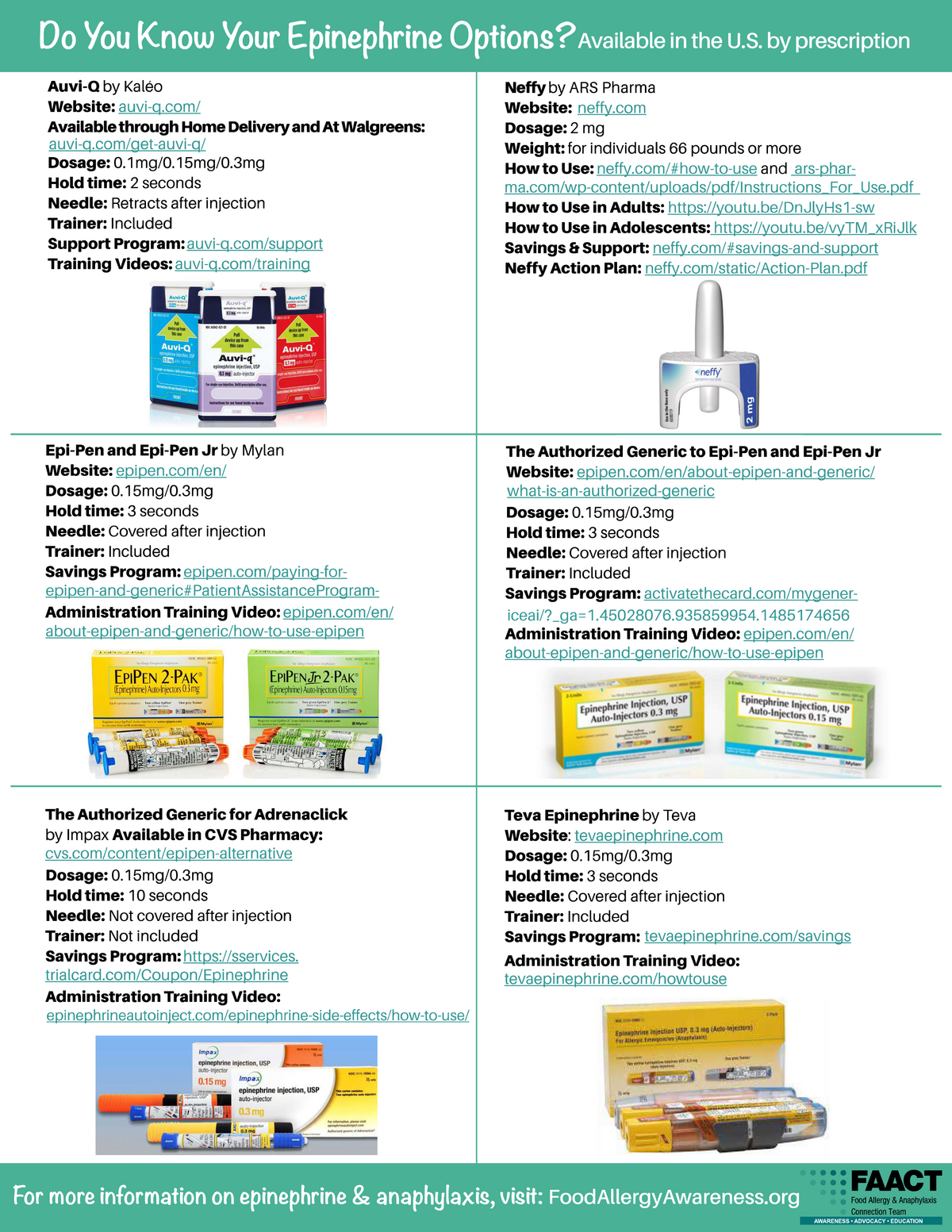Epinephrine
Subcategories

Epinephrine
Epinephrine (ep·uh·NEPH·rin): A form of adrenaline – a hormone the human body creates naturally in response to stress. When administered, epinephrine works rapidly to constrict blood vessels, which helps increase blood pressure and keep blood flowing to vital organs. (Anaphylaxis can cause a severe and life-threatening drop in blood pressure.) It also relaxes airways to improve breathing, relieves cramping in the gastrointestinal tract, decreases swelling, and helps blocks itching and hives.
Epinephrine is the first medication that should be administered when treating anaphylaxis. Epinephrine reverses symptoms and allows time to seek additional care. Side effects from epinephrine may include rapid heart rate, jitteriness, weakness, paleness, and headache. Side effects are generally mild and go away within a few minutes.
Epinephrine is typically injected into the upper, outer thigh. Auto-injectors are designed to go through clothing, so a dose can be administered immediately. If an individual accidentally injects the device into a finger, hand, or other area of the body, seek medical treatment in an emergency room immediately. (Epinephrine constricts blood vessels – which, when administered correctly, restores blood pressure).
** You should take your FDA-approved epinephrine products everywhere you go. Auto-injectors should be kept at room temperature (25°C, 77°F) until the marked expiration date, when they should be replaced. Your epinephrine auto-injector should not be refrigerated or exposed to extreme heat or light. Keep these temperature requirements in mind if you’re thinking of putting your auto-injectors in your car’s glove compartment, for example.
FDA Approved First Nasal Spray for Treatment of Anaphylaxis
On March 5, 2025, U.S. the Food and Drug Administration (FDA) has approved neffy® 1 mg (epinephrine nasal spray) for the treatment of Type I allergic reactions, including anaphylaxis, in children who are aged 4 years and older and weigh 15 to < 30 kilograms (33 to < 66 lb.).On August 9, 2024, the U.S. Food and Drug Administration (FDA) has approved neffy®—an epinephrine nasal spray for the treatment of Type I allergic reactions, including anaphylaxis—for use by adults and children. This is the first non-injectable epinephrine device to receive FDA approval, giving patients and families a treatment alternative during an allergy emergency.
When you can get it:
- neffy 2mg is available now in pharmacies for patients who weigh at least 66 pounds.
- neffy 1mg is now approved for those 4 years and older who weigh 33 lbs or more and will be available in May 2025.
What’s different: The shelf life of neffy nasal spray is 30 months (meaning you won’t need to replace it every year). It can be exposed to temperatures up to 122°F (50°C), making it potentially effective even if left in a hot car or outside, and can be thawed and used if accidentally frozen.
What’s the same: Doctors advise that people at risk for anaphylaxis carry two doses of epinephrine at all times.
Learn more about neffy, including how it works, how to use instructions and videos, savings and support programs, neffy action plan, and to receive updates at neffy.com.
Epinephrine Instructional Videos


